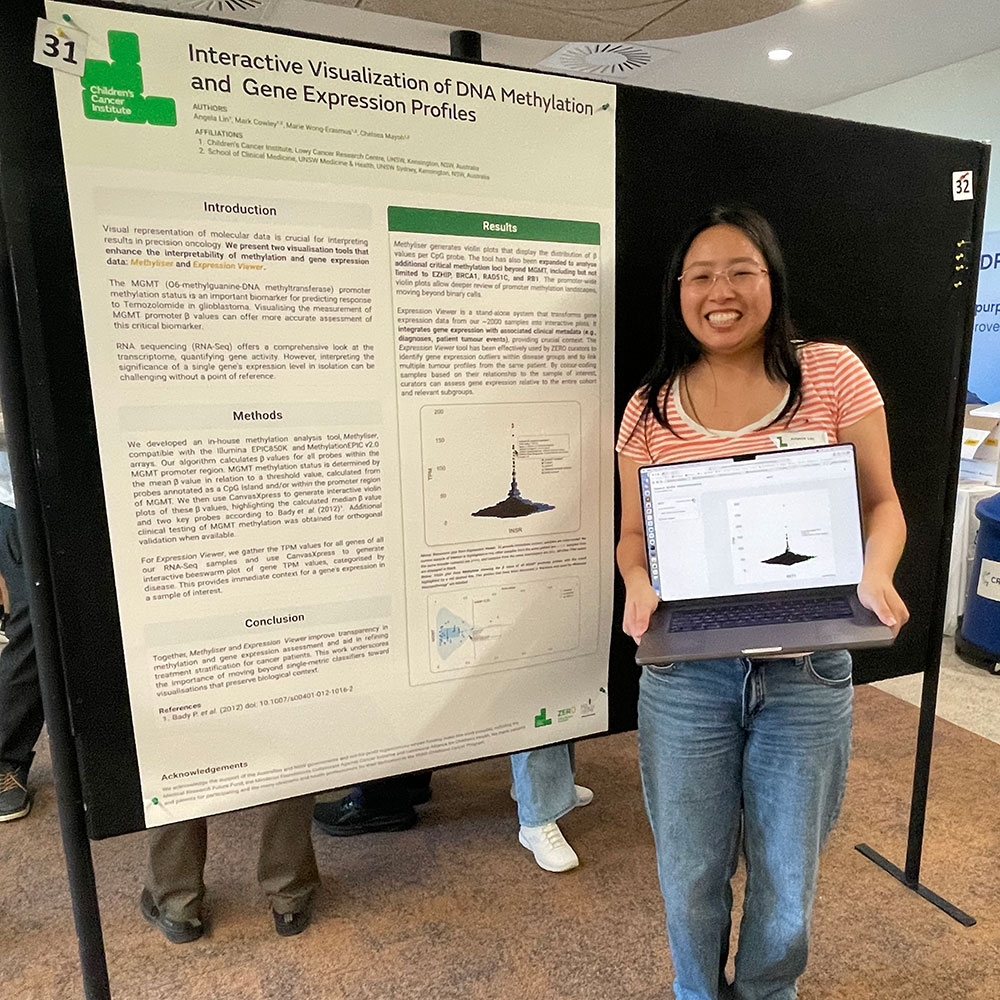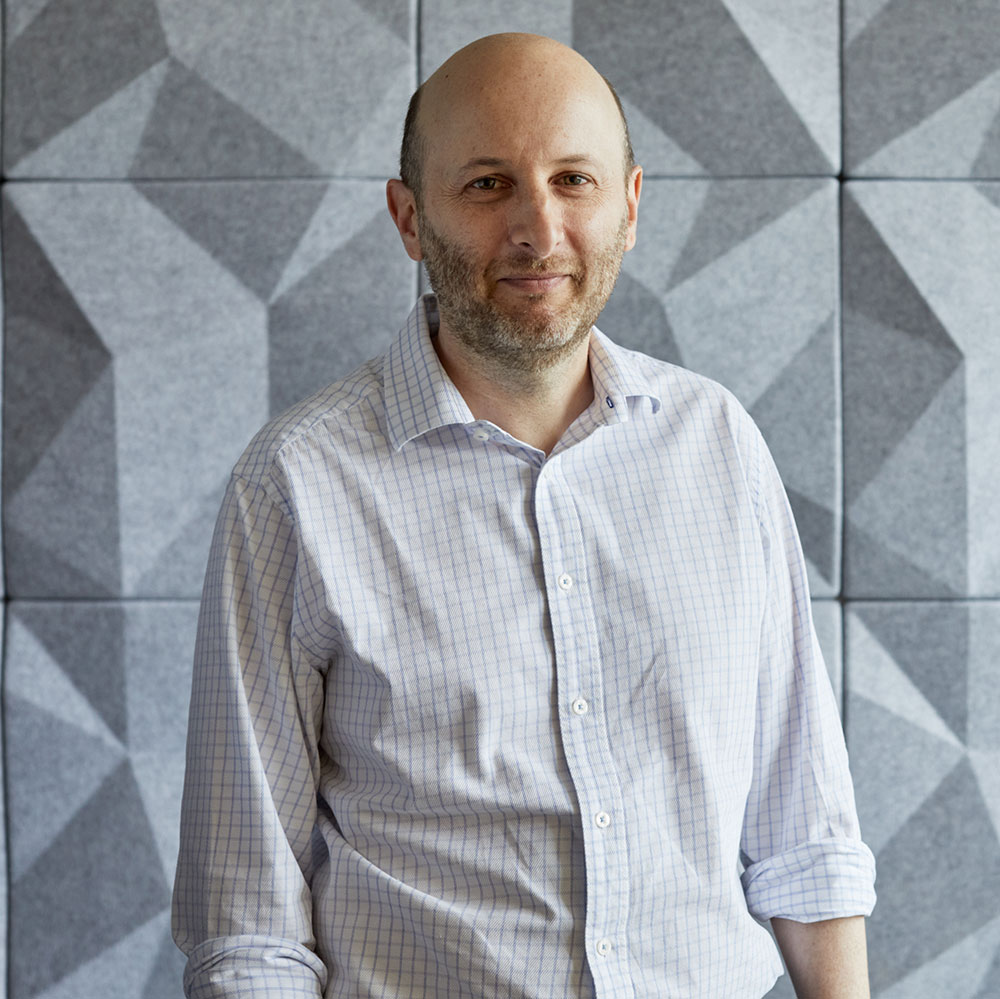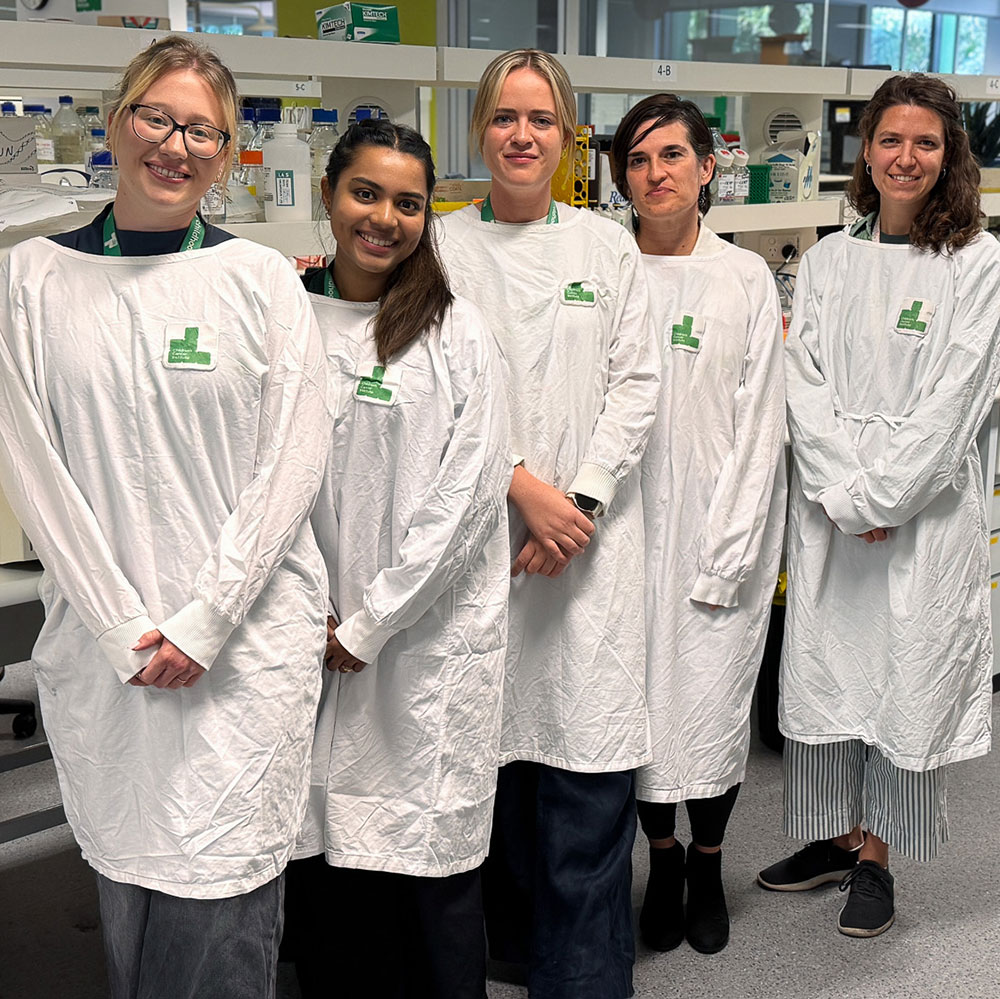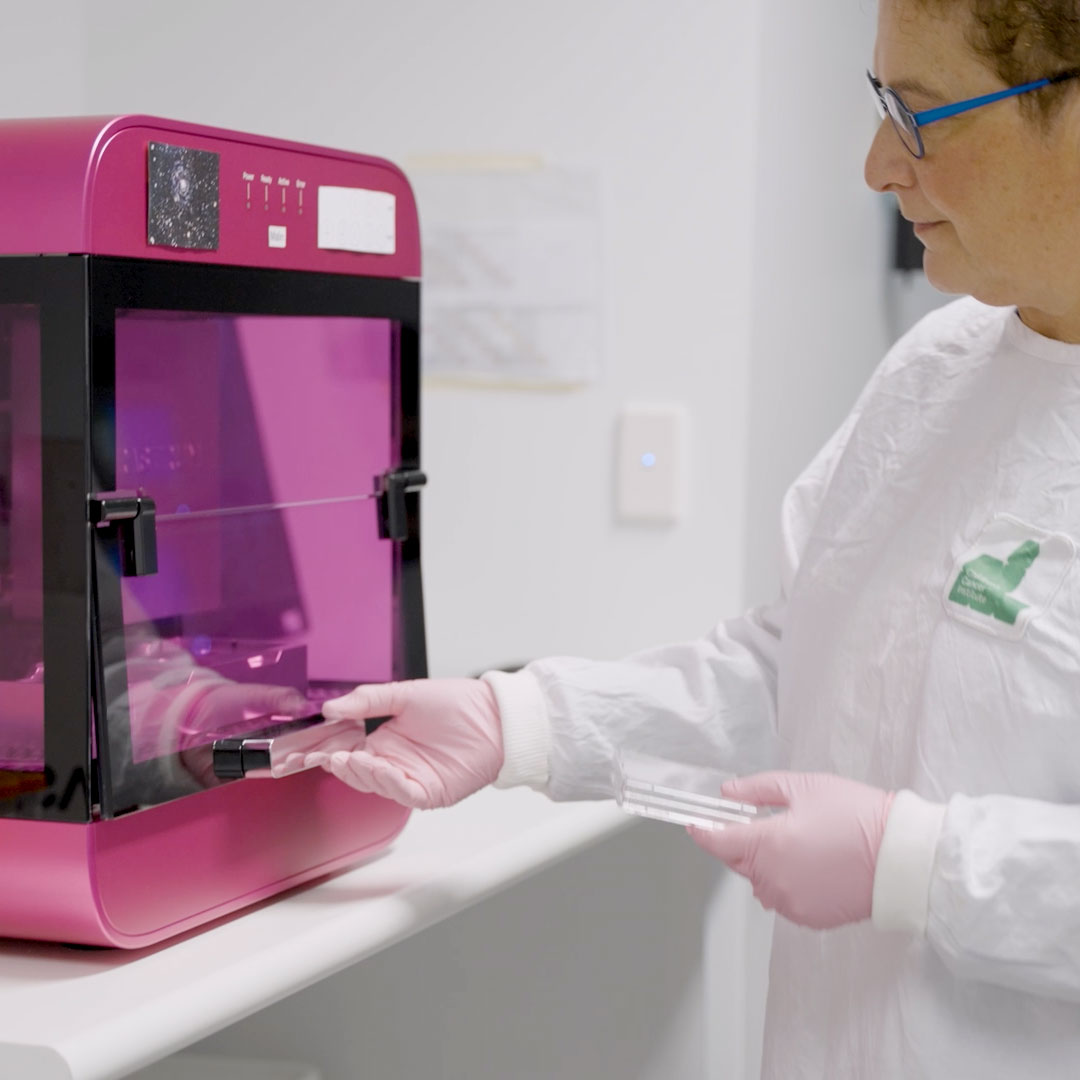
At the International Nanomedicine Conference in Sydney (25-27 June), Helen Forgham, from Children’s Cancer Institute, is presenting a new technology for targeting the childhood brain cancer medulloblastoma. She’s using star-shaped nanoparticles to deliver gene silencing drugs to tumour cells.
Medulloblastoma is the most common malignant brain tumour of childhood, representing 20% of all childhood brain tumours, mainly affecting children between the ages of three and eight.
Current treatments are effective in 70% of cases, however the therapy is so harsh that these children often experience life-long health issues such as cognitive impairment, hearing loss and endocrine dysfunction.
An ideal treatment is one that targets cancer without harming the patient’s healthy cells and organs. This week (beginning June 25) PhD scholar Helen Forgham, from Children’s Cancer Institute, will describe at the International Nanomedicine Conference in Sydney a therapy using star-shaped nanoparticles that may deliver gene silencing drugs (siRNA) more effectively to the tumour.
The strategy – the use of nanomedicines to kill cancer cells and help reduce toxic side effects on healthy tissues – will be discussed at the International Nanomedicine Conference in Sydney this week.
In collaboration with scientists (Dr John Quinn and Prof Tom Davis) from the ARC Centre of Excellence in Bio-Nano Science, cancer biologists Dr Joshua McCarroll and Prof Maria Kavallaris from Children’s Cancer Institute have developed a nanoparticle system on which Helen has begun pre-clinical investigations. The nanoparticles are being explored as delivery vehicles delivering siRNA that targets a gene which is upregulated in medulloblastoma and promotes aggressive tumour growth. Helen is using gene silencing technology packaged into tiny nanoparticles which can switch off this cancer-causing gene.
As part of Helen’s PhD, she will be exploring for the first time the potential of these nanoparticles to deliver siRNA to the brain and its effect on tumour growth. As part of this investigation she will also be assessing the impact of the nanomedicine on healthy brain tissue in animal models of medulloblastoma.
According to Helen, “development and in-depth characterisation of the star nanoparticle delivery system is a promising step forward in the search to find better treatments for patients with medulloblastoma – potentially reducing toxic side effects and providing a more targeted therapeutic strategy for treating children with aggressive disease. Ultimately, once properly investigated, this therapeutic drug may prove to be successful in treating not just medulloblastoma but also a range of different brain cancers in the future.”
BACKGROUND: see https://theconversation.com/explainer-what-is-nanomedicine-and-how-can-it-improve-childhood-cancer-treatment-69897














